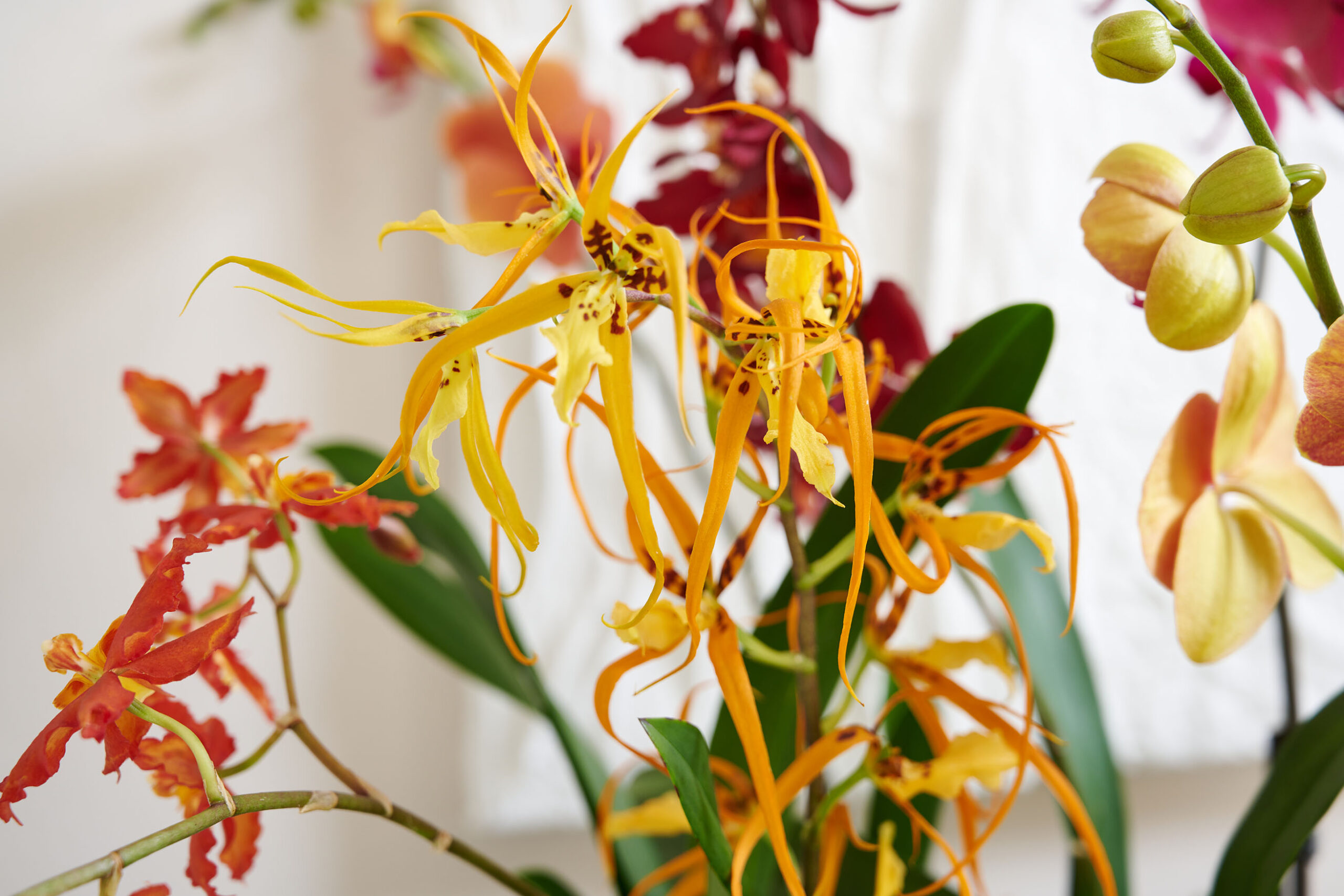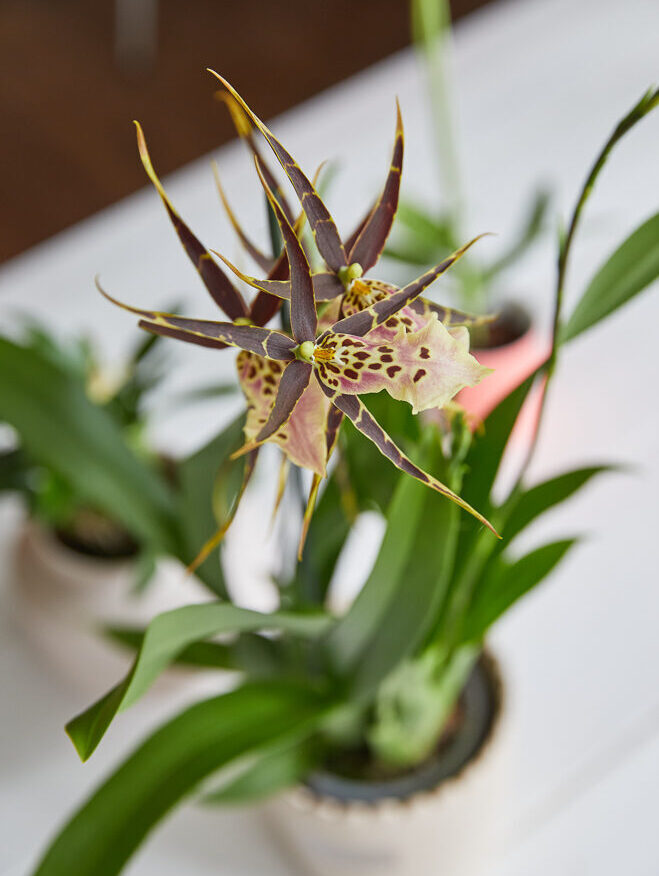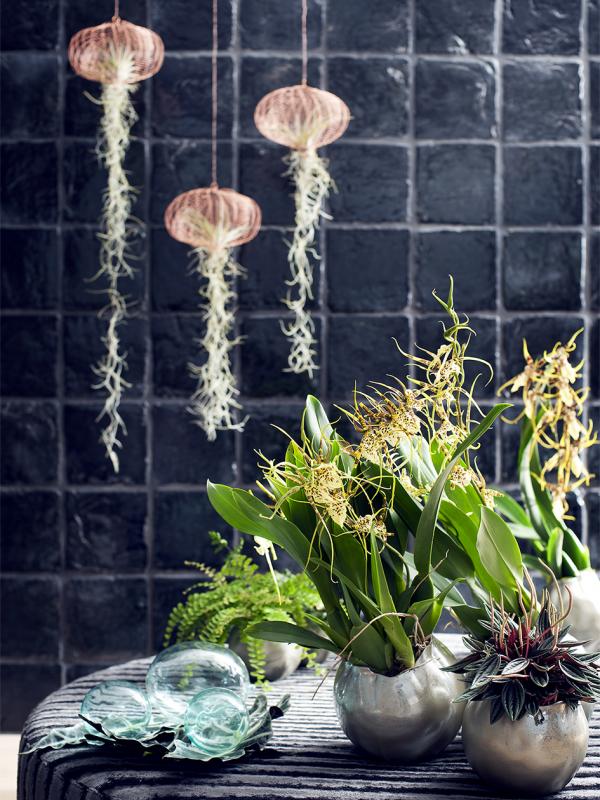Brassia: unique orchid with extra-terrestrial beauty
Unique, wispy and enchanting: Brassia is a science fiction fantasy that grows and flowers – and that you can’t stop looking at.
Colours and shapes
The narrow, slightly curling ribbon leaves and the bizarre structure make Brassia a very unusual orchid. The plant has curved stems with 10 to 15 greenish flowers with a diameter of 15 to 20 cm. The flowers themselves have blackish purple spots, and the white lips have distinctive green patches. This extra-terrestrial appearance makes Brassia a very eye-catching orchid. The long ribbon-like flowers have earned it the nickname ‘spider orchid’. Despite its exotic appearance, the beautifully scented Brassia does well in a living room.
- Photo: Thejoyofplants.co.uk
Symbolism
As Brassia’s flowers are so light and delicate, they move when you walk past. For that reason the orchid is also known as the ‘dancing lady’ in South America.
Read also: This is how special exclusive orchids are
Origin
Brassia originates from the damp rainforests of Central and South America. It’s related to the Oncidium orchid, and there are some 35 species. Its delicate appearance suggests it’s a hothouse plant, but nothing could be further from the truth. In the wild, Brassia grows everywhere from swamps to some thousand metres above sea level. It’s an epiphyte, which means that the orchid grows on or under other trees without drawing nutrients from them. It fishes water and food out of the air with its aerial roots and the flower helps with reproduction: its spider-like shape attracts spider-hunting wasps which sting the lip and thus pollinate other Brassias.



